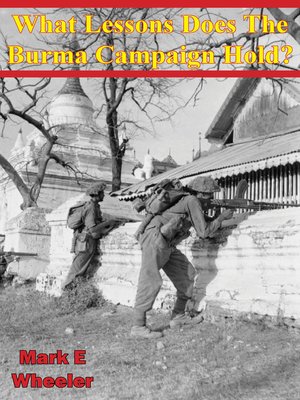
Sign up to save your library
With an OverDrive account, you can save your favorite libraries for at-a-glance information about availability. Find out more about OverDrive accounts.
Find this title in Libby, the library reading app by OverDrive.



Search for a digital library with this title
Title found at these libraries:
| Library Name | Distance |
|---|---|
| Loading... |
The World War II Burma Campaign was an "economy of force" theater where competition for scarce resources presented unique challenges to operational planners. The Campaign is analyzed using the Principles of War and other operational concepts. Its study shows the close, overlapping relationship between the operational level of war and the tactical and strategic levels. The campaign demonstrates the need for a well-organized theater command structure, the dependence of war plans on allied cooperation and support, the limitations imposed on operations by insufficient logistical resources, and the effect that enemy action can have on plans. The problems of resource allocation, force apportionment, and command relationships will continue to plaque military planners. The lessons from the Burma Campaign are as important and relevant today as they were in World War II.







